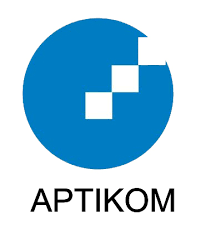Designing a Fun English Vocabulary Card Application as a Means of Learning English Vocabulary for Elementary School Students
Abstract
English has been globally used for communication and studied by almost all countries. Therefore, understanding and being able to communicate in English is crucial. A lot of English learning is currently delivered using the lecture method, but there is no medium for learning English vocabulary in an application. This study aims to create a Fun English Vocabulary Card game to improve children’s English vocabulary. To design the learning model, the design of use case and activity diagrams was utilized. Based on the pre-test and post-test results, this game significantly increased children’s English vocabulary. The average pre-test score was 43.625, and the average post-test score was 95, which indicates that the educational game application could improve users’ knowledge and understanding of English vocabulary.
Keywords
Full Text:
PDFReferences
Bolinger, D. Aspects of language. New York, Harcourt, Brace & World, 1968.
Saragi, T. “Vocabulary learning and reading”. System, 6(2), 72-8.
Johnson, K. “An introduction to foreign language learning and
teaching”. 3rd edition. London: Routledge, 2017.
Syakur, A. “The Effectiveness of English Learning Media through Google Classroom in Higher Education”. Britain International of Linguistics Arts and Education (BIoLAE) Journal, vol 2(1), 475-483, March. 2020.
Ramirez, S. “Comparing the efficacy of picture card stimuli to storybook stimuli in teaching morphologic structures to children with expressive language disorders”. Doctoral dissertation, Communicative Disorders and Deaf Studies., The Calofornia State University., Los Angeles, 2017.
Yachi, M. (2007, July). Cooperative picture card dictionary authoring system for communicative language learning. In Seventh IEEE International Conference on Advanced Learning Technologies (ICALT 2007) (pp. 927-928). IEEE.
Prahmana, R. C. I., Zulkardi, Z., & Hartono, Y. “Learning multiplication using Indonesian traditional game in third grade”. Journal on Mathematics Education, vol 3(2), 115-132. 2012.
Cheng, M. T., Su, T., Huang, W. Y., & Chen, J. H. (2014). An educational game for learning human immunology: What do students learn and how do they perceive?. British Journal of Educational Technology, 45(5), 820-833.
McGrath, M. B., & Brown, J. R. (2005). Visual learning for science and engineering. IEEE Computer Graphics and Applications, 25(5), 56-63.
Beymer, D., & Poggio, T. (1996). Image representations for visual learning. Science, 272(5270), 1905-1909.
Aleryani, A. Y. Comparative study between data flow diagram and use case diagram. International Journal of Scientific and Research Publications, vol 6(3), 124-126. 2016
Prayudi, K. A. W., Arthana, I. K. R., & Wirawan, I. M. A. (2015). Pengembangan Game Labrin Matematika Tingkat SD. KARMAPATI (Kumpulan Artikel Mahasiswa Pendidikan Teknik Informatika), 4(5), 414-421.
DOI: https://doi.org/10.18196/eist.v1i3.13173
Refbacks
- There are currently no refbacks.
Editorial Office:
EMERGING INFORMATION SCIENCE AND TECHNOLOGY
Department of Information Technology, Faculty of Engineering,
Universitas Muhammadiyah Yogyakarta.
Jln. Brawijaya Tamantirto Kasihan Bantul 55183 Indonesia
Telp:(62)274-387656, Fax.:(62)274-387656

